Week 19/2024: Supremely judgmental
Supremely judgmental
Week of 6 May 2024
This week was the 200th anniversary celebrations for the Supreme Court of Tasmania. And Sunday was Mother’s Day.
Supreme Court
My favourite building
It’s no secret that my favourite building in Hobart (that is still standing) is the Supreme Court.
And on Friday, 10 May 2024, it celebrated its 200th anniversary. I mean the institution of the Supreme Court, not the building, which was constructed in the period 1975 to 1980.
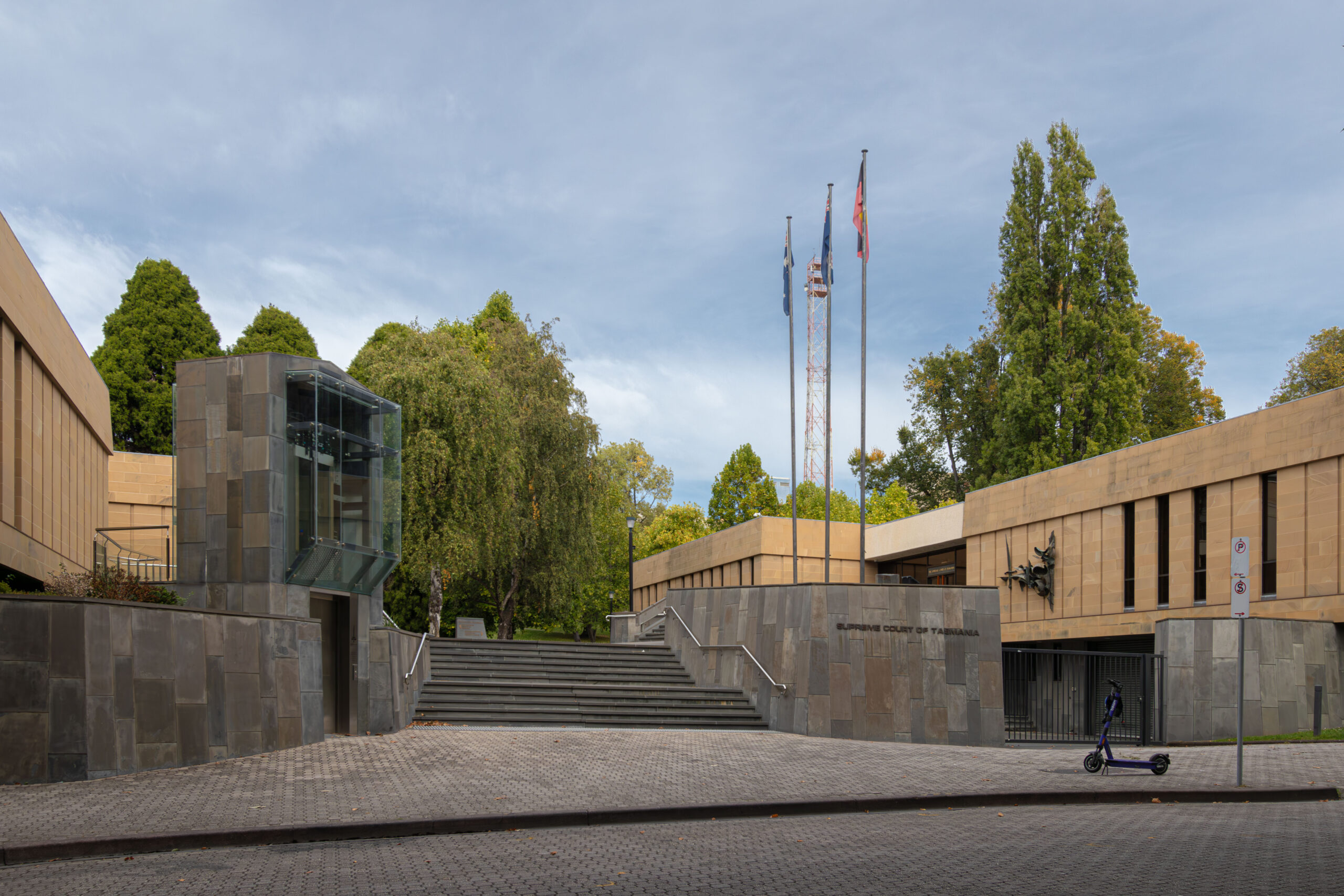
This is the oldest Supreme Court in Australia, first sitting in 10 May 1824. So this week several organisations held events to commemorate the anniversary, including the State Library.
Tour of the archives
I booked into a tour of the Tasmanian Archives to see some of the oldest documents relating to the court and to learn more about its history.

I remembered from my 2019 Open House Hobart tour that the original 1824 court was located in the building on the corner of Murray and Macquarie Streets (now part of Treasury).
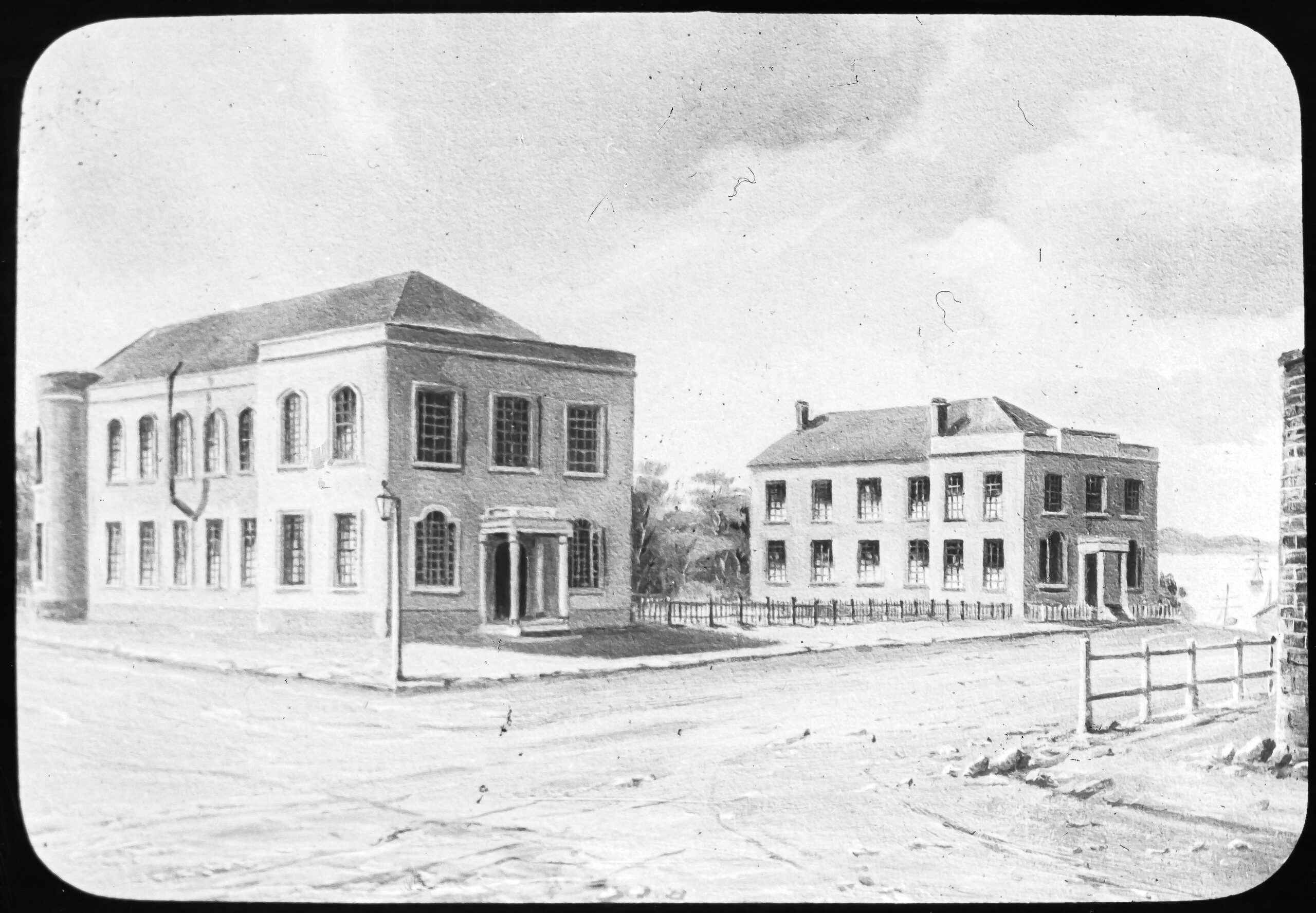
That building was designed by the Superintendent of Stonemasons, William Hartley Wilson.

In 1860, the criminal court moved to the Penitentiary Chapel on the corner of of Brisbane and Campbell Streets and the civil court moved a couple of doors down Macquarie Street. The two courts were reunited in 1980 when the current complex in Salamanca Place was completed.
The tour was the first time I’d been into the non-public access areas of the Library’s Stack building so I was very excited.
Into The Stack
Our guides for the tour, Lydia and Anthony, said we were the fourth tour they’d done, having started the evening before with a tour for all the Australian Chief Justices, who were here for the celebrations. I bet they would have heard some fantastic stories on that tour!
Unfortunately, I didn’t have any anecdotes to add to their collection; I was there to learn.
What I did know from the modernism tour from last year’s Open House Hobart was that the Stack was designed with very few windows, to prevent light from getting in and damaging the records. This also means that the lights in the storage areas stay off unless someone is actually in there.
And while the tour was predominantly about the Supreme Court’s records, we got to see some other cool things as well. Like a program from the Hobart Regatta printed on silk, and huge plan for the design of a train wheel.
Charter of Justice
The first document we saw was the Charter of Justice that created the Supreme Court of Van Diemen’s Land.

This was made under the seal of King George IV, which is a picture of a man on a horse and resembles a cheese wheel. The whole thing was transported to the colony in a rather elaborate box (the bit for the seal looks bigger than the bit the rolled up charter was placed in).
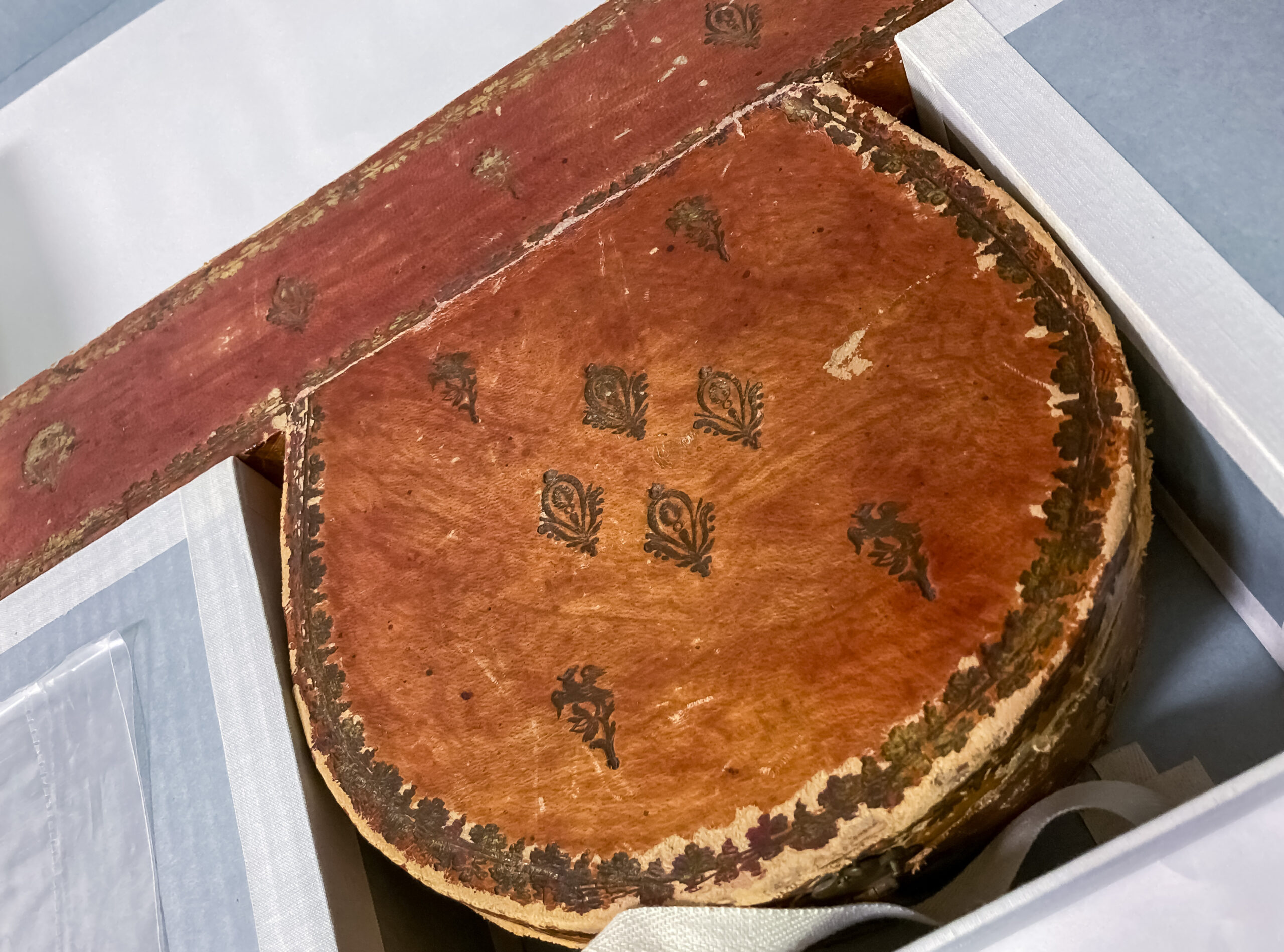
The document is no longer stored rolled up in the travel box; they keep it in a special conservation box to protect it.
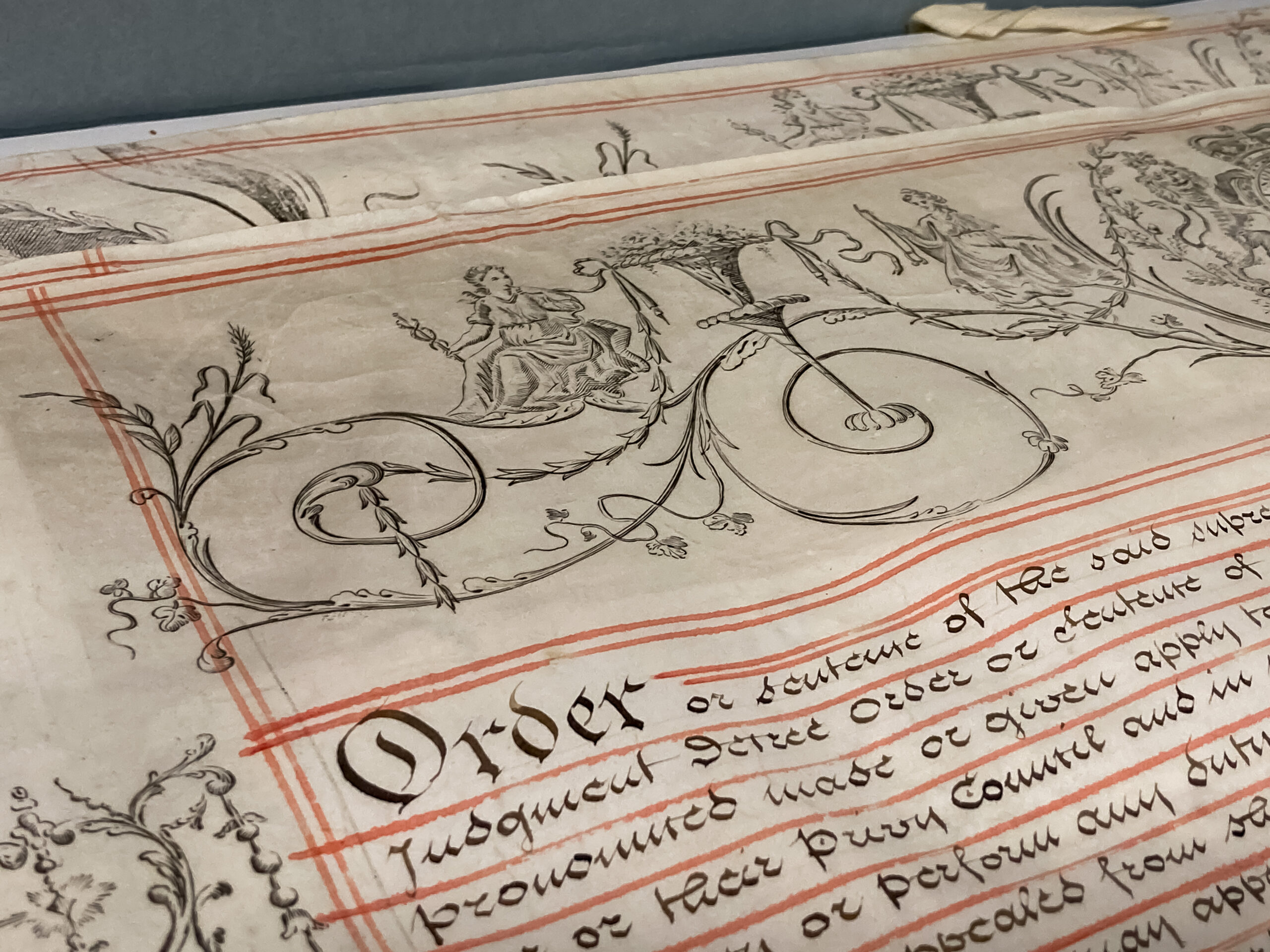
The jury is out

Some of the other documents we were able to look at were an early court register from November 1824, and an early jury list.
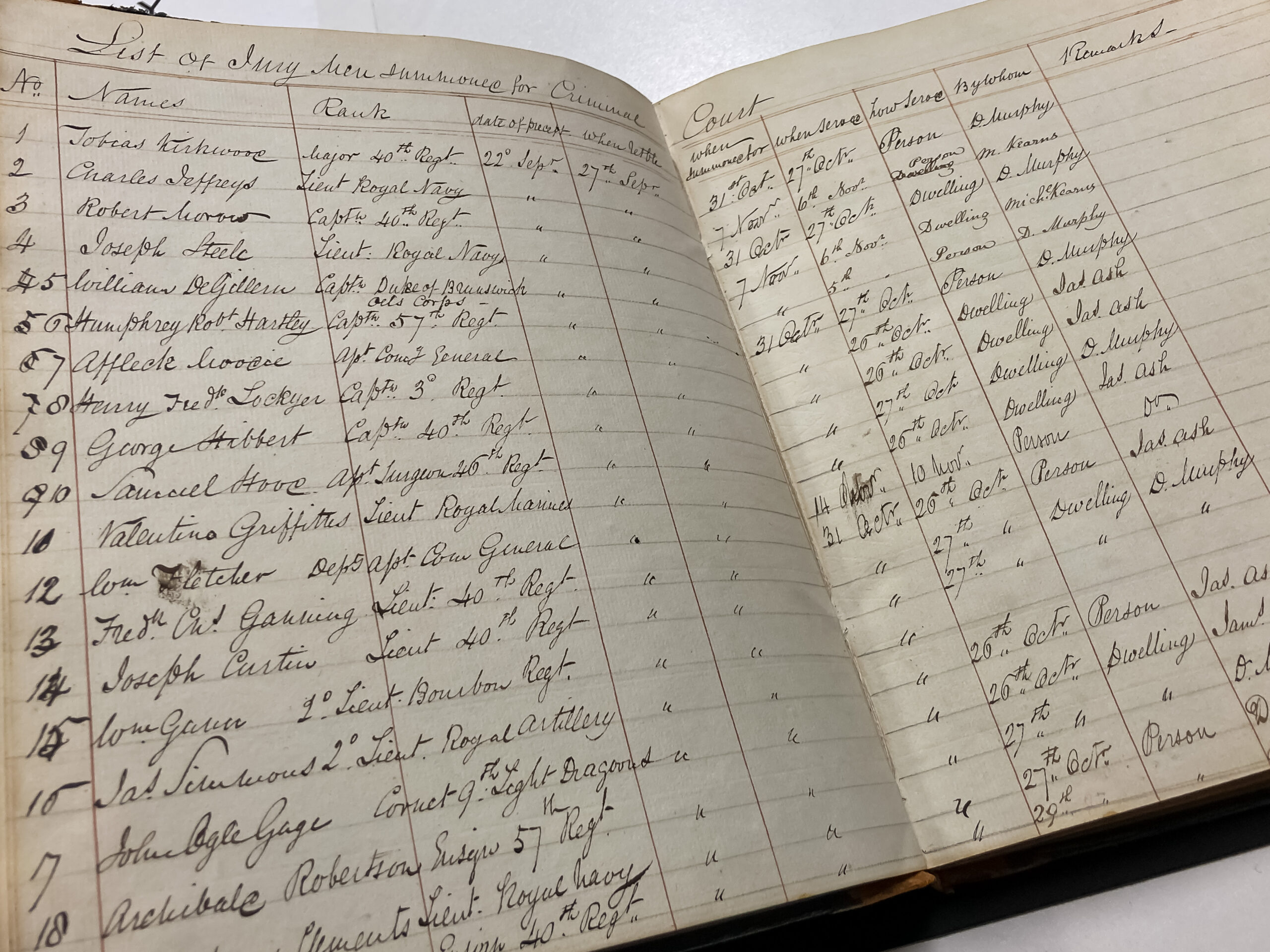
This is notable not only because all the jurors were men but also because they were all from military ranks. There was originally no trial by your peers. I believe this changed, after a lengthy battle for the right to trial by jury, in 1840. However, even so, women were barred from sitting on juries until the mid-20th century.
Really?
Yes. While by 1957, the law required all men between the ages of 25 and 65 who were enrolled to vote to be automatically placed on the jury list (unless exempt), women meeting the same criteria had to apply to be added. Lynda Heaven (1902-1987) became Tasmania’s first female juror in 1959. She was later also the Labor Party’s first female member of the House of Assembly.
In 1974 amendments to the Jury Act saw women automatically included on the jury list but they could opt out without an excuse. It wasn’t until 1990 that compulsory jury service applied equally to men and women.
(Sorry not sorry, I’ve been rabbit holing.)
We also saw this court record for the trial of ten people convicted of libel on Mr Robert Lathrop.
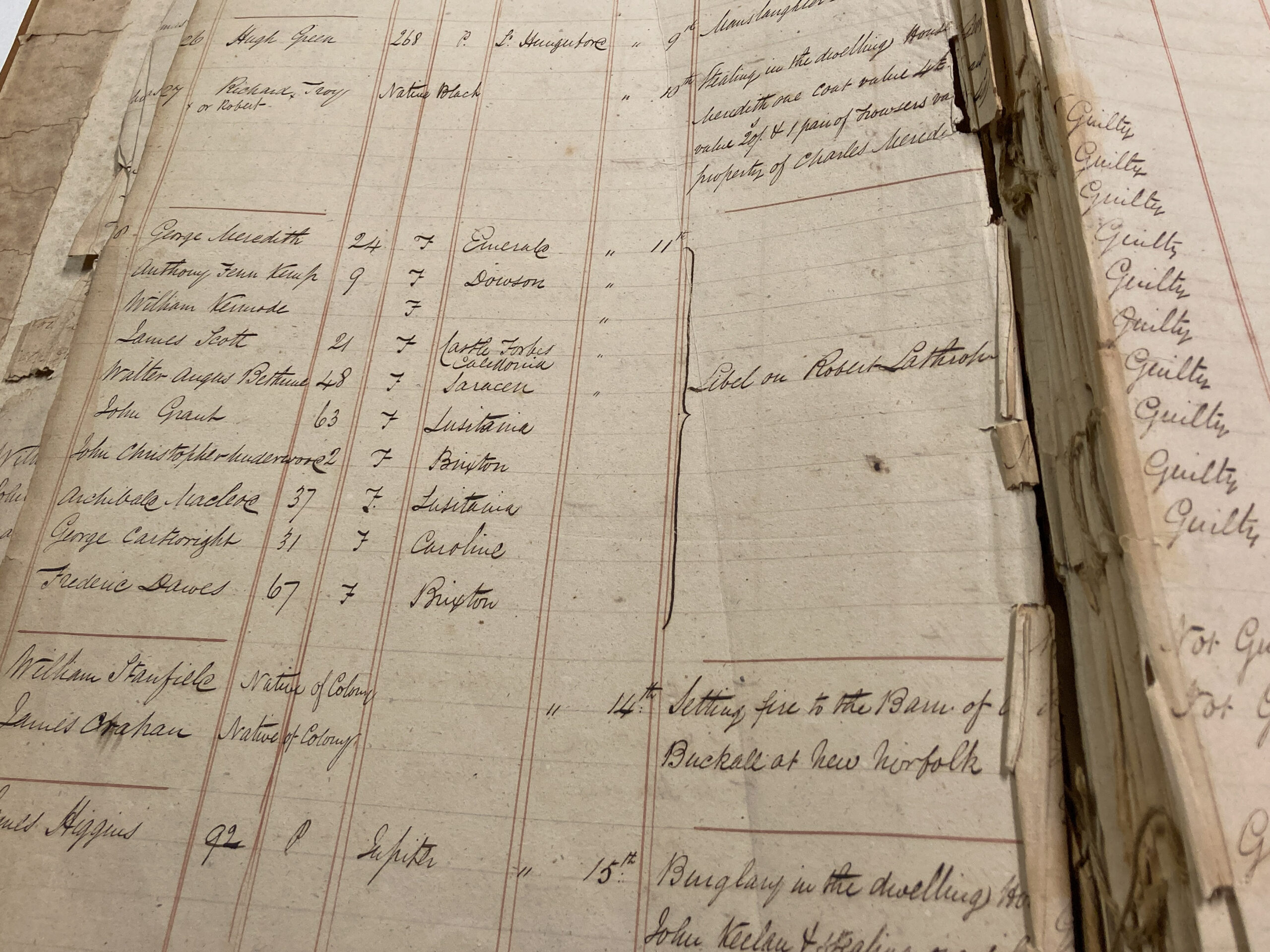
Can it be this Robert Lathrop?
If it’s the same person, he claimed ancestry from Dynnyrne Scotland and gave that name to his house in Hobart, which spawned the name of the suburb. He was also one-time editor of the Hobart Town Gazette and became known for his outspokenness against the establishment. He is recognised as a founder of freemasonry in the colony and was convicted of bigamy in 1815, the crime for which he was transported.
The end of the tour
On our way to the last stop of the tour, we saw some old photos of the library on the wall. This was particularly interesting because just this week most of the ground floor has been blockaded for new work to “revitalise” it.
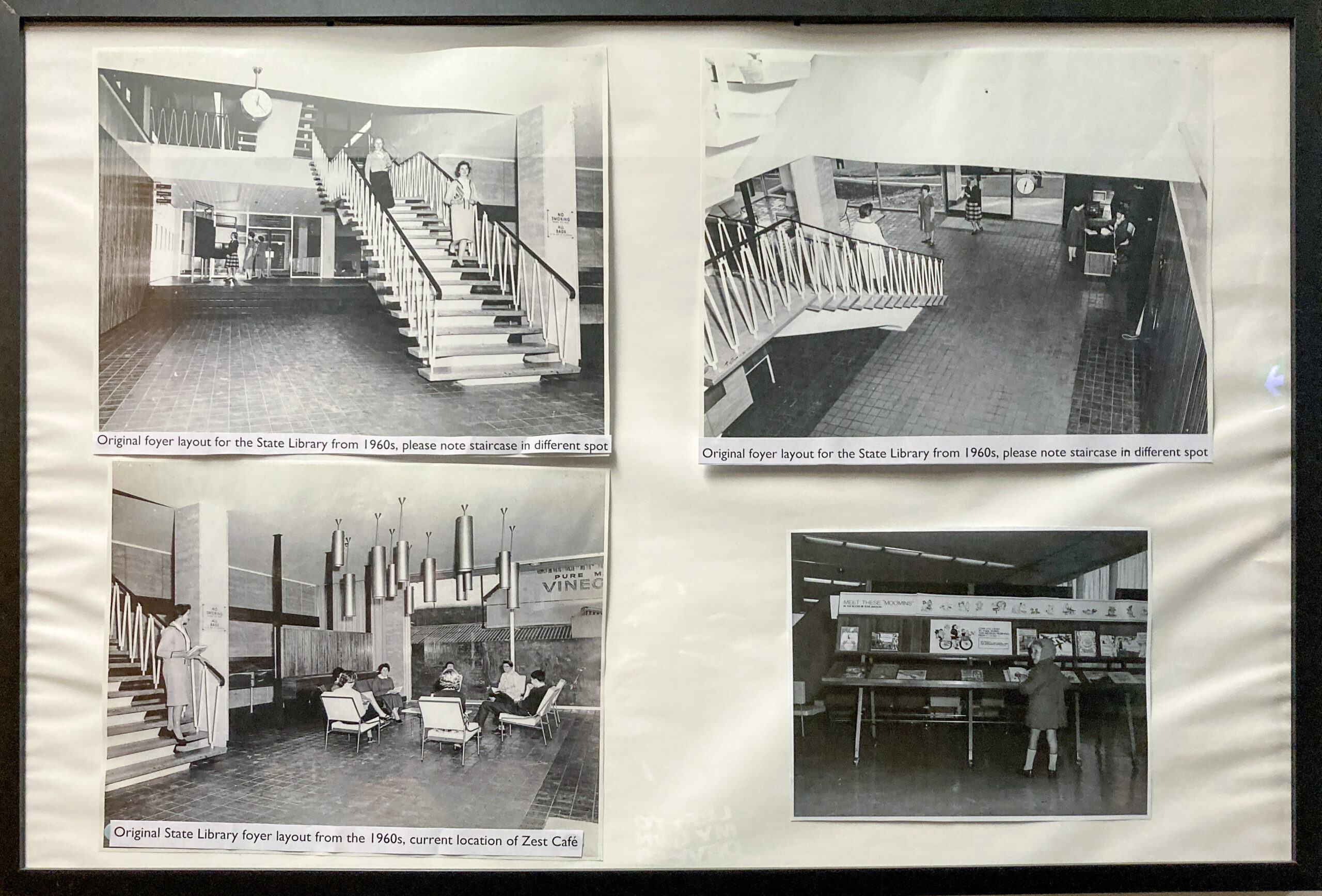
We made our way to the most fragile and oldest collection in the Archives, the convict collection, which houses the original documents pertaining to people who were transported.
These are extremely fragile and no one is allowed to touch them. All the records have been digitised so they’re accessible without damaging the books.
It was a fascinating tour.
We crammed a lot in to just an hour and I’m really grateful to Lydia and Anthony for showing us around and answering our questions. I’m also looking forward to reading Justice Estcourt’s book, which was launched at the court on Friday.
Week 19 summary
Habit tracker
- 9.30 shutdown: 4/7 days
- 8,000 steps: 7/7 days
What was the best thing about this week?
Along with the tour of the archives, the best thing this week was having breakfast with Kramstable for Mother’s Day on Sunday.
Oh, and there were these lights in the sky on Saturday night.
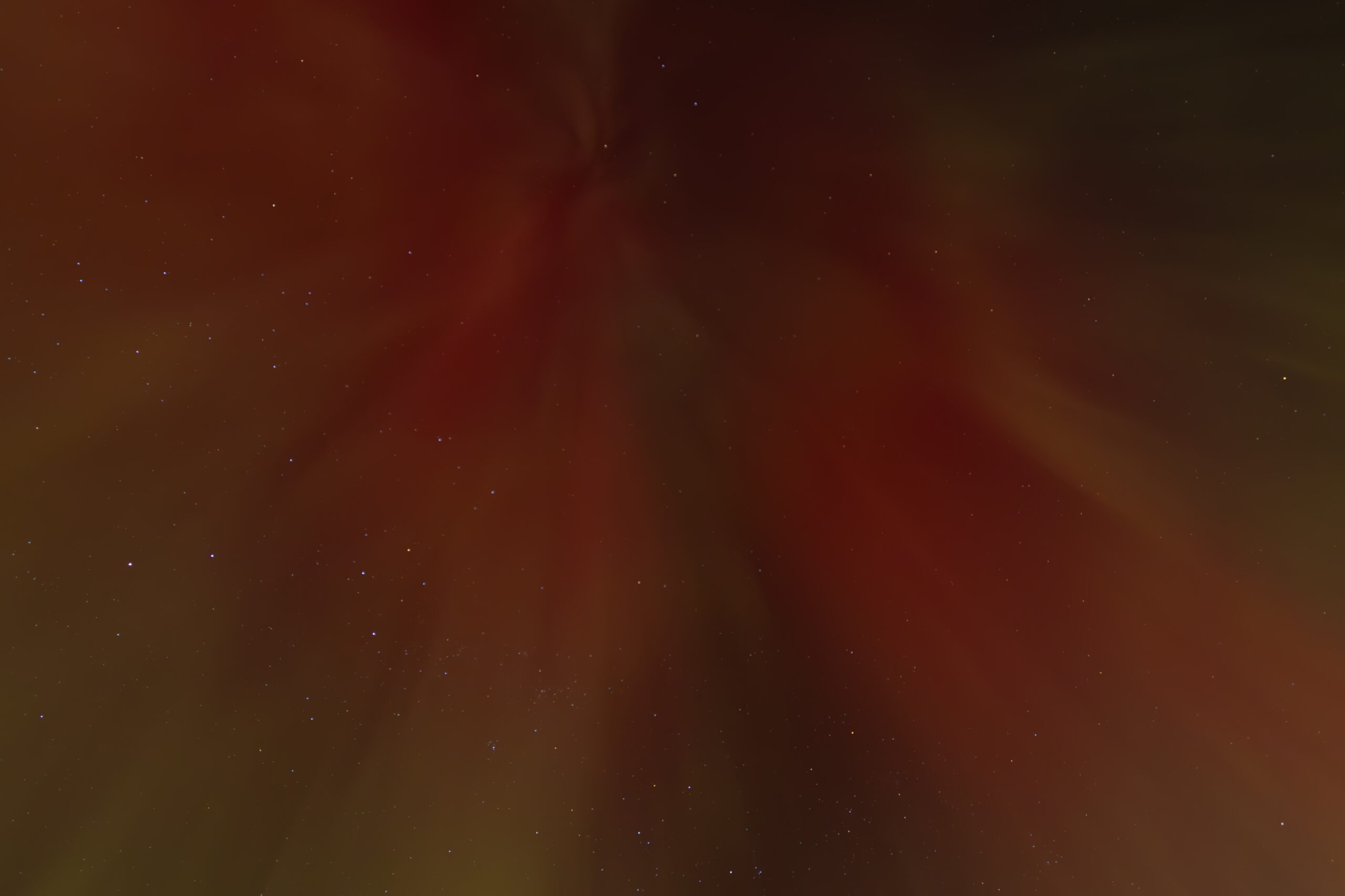
I don’t think anyone else saw them though.
What did I notice this week?
The bus stop signs at our bus stops have been changed and there are no numbers there any more.
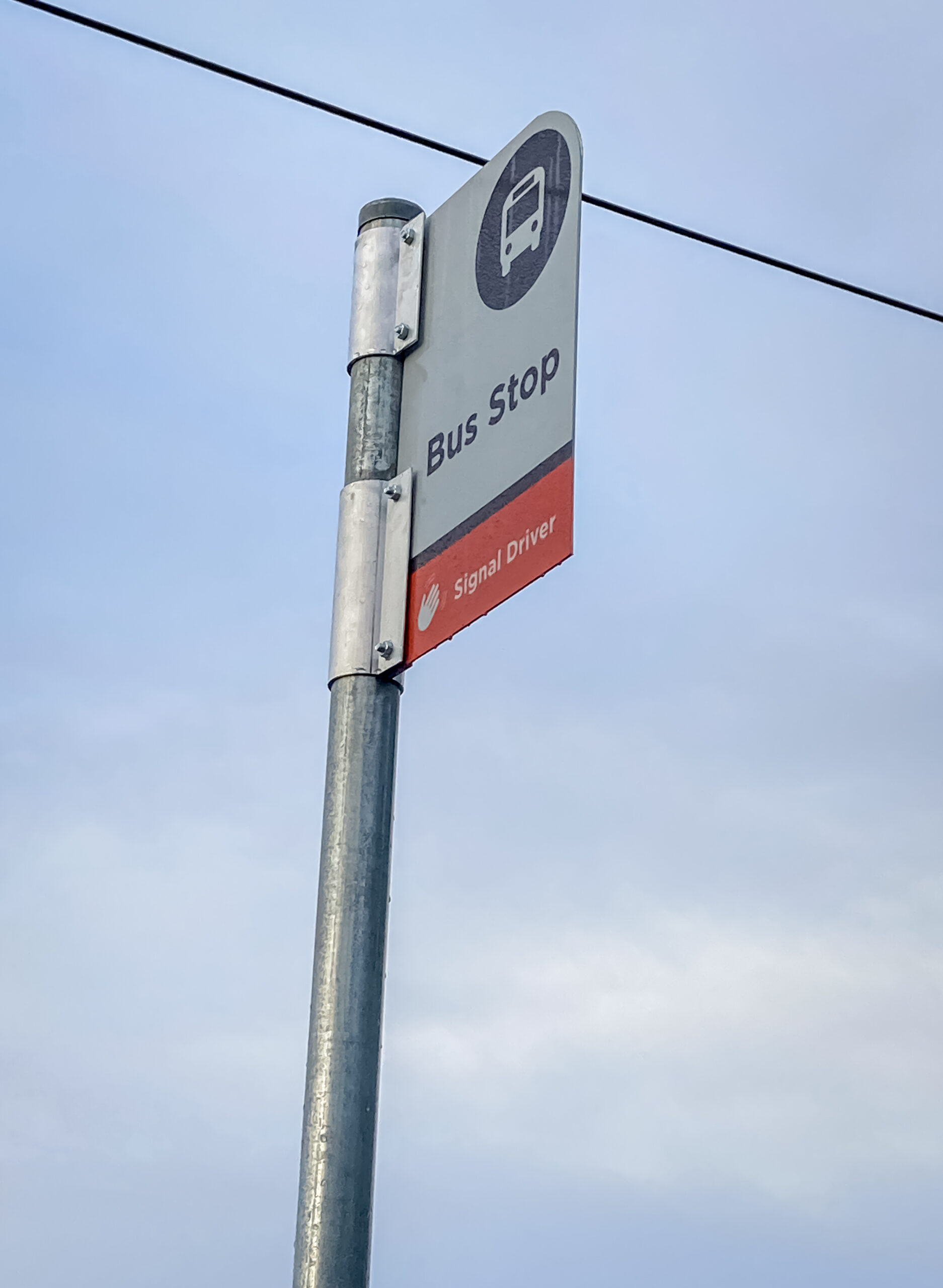
I’m not sure if this is a progressive thing to remove bus stop numbers.
It’s not a problem during the day, but I use bus stop numbers at night to help me work out where I am so I don’t miss my stop. It’s really hard to see the road in the dark, especially when the bus has the internal lights on.
What did I learn this week?
During last week’s research about the decision about Canberra being chosen as Australia’s capital, I learned that some politicians didn’t want it to be created in the backwaters of NSW. They felt this location would exclude “the best men” from federal parliament [because they wouldn’t be able to spend as much time and they needed to on their actual professions in their home towns] and would create a home for “professional politicians”.
I’m leaving that one right there.
What am I reading?
- Undertow by Kim Bambrook
- The Menopause Brain by Lisa Mosconi